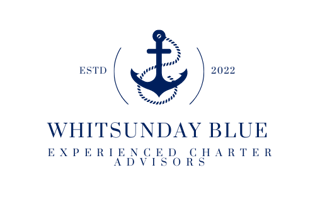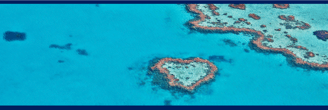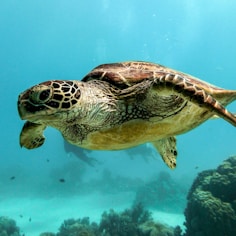Believed to have been formed roughly 110 Million years ago by a series of once-raging volcanoes, the Whitsunday Islands can be found nestled between the North-East Coast of Australia and what is known as the Great Barrier Reef; A Natural Wonder of the World comprised of approximately 2,300km of living Coral Reef.
This is the worlds LARGEST Coral Reef System, and is teeming with an impressive array of marine life.
The Whitsunday Islands, comprised of 74-individual Islands are dubbed the largest group of offshore islands in Australia.
There are only 5 resort-bearing islands; of those who are operating are, Daydream Island Resort - InterContinental Hayman Island Resort - Hamilton Island - Palm Bay Resort + Elysian Retreat (on Long Island).
The remaining 70 per cent of the Whitsunday Islands are in fact National Parks, with QWPS (Queensland Parks and Wildlife Service) working hard to ensure this natural beauty is well preserved and efficiently looked after for all who reside and visit to behold.
Of the 74 Islands, Whitsunday Island is the largest. Better known for its famous 7.5km stretch of pristine white silica sandy beach; Whitehaven Beach. Whitehaven Beach (both its southern and northern end) has made many blockbuster appearances in an array of Hollywood movies, and has been awarded the title of one of the 'Best Beaches in the World'!
The white silica sands (nearly 100% silica) and how it got to be there is still a mystery. Geologists cannot be sure where the silica sand on Whitehaven Beach comes from although there are several unproven theories. One theory includes a cove created by a sunken volcano.
The Whitsunday Island National Parks have 11 great walking / hiking trails. If you're an avid hiker, we recommend packing your best walking shoes and camera.
Once the water temperature reaches 26.5 degrees (typically from late October to May) it is considered Stinger Season. We strongly recommend hiring or bringing a stinger-suit for your water activities. Most vessel companies will provide complimentary suits during these seasons.
Insects can be a nuisance on some of the national parks, and can leave you pretty itchy. Some natural (or not) insect repellant will keep them at bay.
The sun packs-a-punch here in the Whitsundays, so be sure to pack some light linen, a hat, sunglasses, and some sunscreen (reef-safe sunscreen is best!)
During our Warmer Seasons (December all the way through to April) is considered Wet Season in the Whitsundays, and you can typically expect to see rainfall
Best snorkelling can sometimes be achieved in Winter months - cooler water results in a stronger vibrancy seen in Corals, while visibility is usually at it's best
Whale Migration Season falls between June and October. This is the longest and largest animal migration on earth, with the Humpback Whales travelling over 3,000 miles from their feeding grounds of Antartica to visit, and calf here in the warm waters of the Great Barrier Reef.
The GREAT BARRIER REEF vs FRINGING REEFS.
The Great Barrier Reef (GBR for short) is an expanse 2,300km stretch of living coral, sandy shoals, and sea-grass. It is located 78.3km - 110km off shore from the Whitsundays and can take anywhere from 2- 4 hours to reach, depending on the vessel. The GBR is very protected from most conditions, and rarely suffers from poor visibility that can be caused with run-off from large, moving tides.
The Whitsunday Islands are surrounded by local, fringing reefs. Fringing, meaning they continue to develop and grow off of the coast, and / or typically separated by a narrow lagoon. Both reefs are spectacular in their own ways, one is simply closer (and a little smaller) to the surrounding resort-bearing islands. They both have the same marine life, corals, and bommies. We find the fringing reef, however can be more susceptible to the large rise and fall of the tides (which on a lower tide, can sometimes result in better visibility).
FUN FACTS + HANDY HINTS




FUN FACTS
HANDY HINTS



